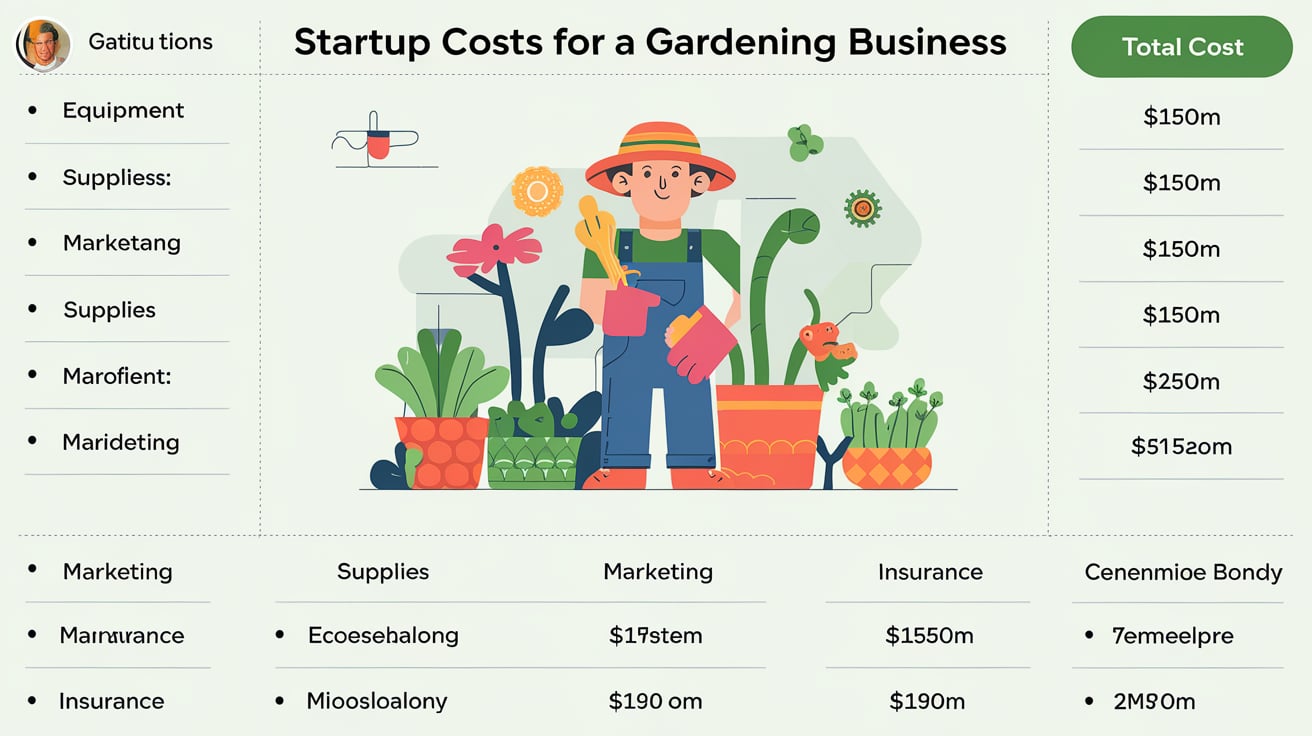Conducting online market research can be a challenging process. It requires a deep understanding of the target market, innovative research methods, and the ability to analyze and interpret data effectively. However, these challenges can be overcome with the right strategies and tools. This article explores some of the common challenges faced when conducting online market research and provides solutions to address these issues.
Common challenges when conducting online market research
Data Security
Protecting Sensitive Information
Protecting sensitive information is a critical aspect of data security. Sensitive information includes personal data that could potentially harm an individual if it falls into the wrong hands. This information could include personal identification details, financial information, health records, and more. Protecting sensitive information involves implementing robust security measures to prevent unauthorized access, data breaches, and data theft.
Ensuring Compliance with Privacy Laws
Ensuring compliance with privacy laws is another crucial aspect of data security. Privacy laws vary by country and region, but they generally require businesses to handle personal data in a certain way. These laws often stipulate that businesses must obtain consent before collecting and using personal data, provide individuals with access to their data, and take steps to ensure the accuracy and security of the data. Non-compliance with these laws can result in hefty fines and reputational damage.
II. Protecting Sensitive Information
A. Understanding What Qualifies as Sensitive Information
Understanding what qualifies as sensitive information is the first step in protecting it. According to the General Data Protection Regulation (GDPR), sensitive information includes data such as racial or ethnic origin, political opinions, religious or philosophical beliefs, trade-union membership, genetic data, biometric data, and sexual life or orientation. Understanding what qualifies as sensitive information allows businesses to implement appropriate measures to protect it.
B. Implementing Security Measures
Implementing security measures is crucial for protecting sensitive information. These measures can include encryption to make data unreadable unless authorized, data loss protection, secure managed file transfer, and more. By encrypting data, businesses can ensure that it remains confidential and intact. Data loss protection can help prevent accidental data loss, while secure managed file transfer can ensure that sensitive data is securely shared inside and outside the organization.
III. Ensuring Compliance with Privacy Laws
A. Obtaining Consent
Obtaining consent is a key requirement under privacy laws like the GDPR. Businesses must obtain explicit permission from individuals before collecting and using their personal data. This includes sensitive information, which must be processed under certain conditions such as consent, legal obligations, protecting vital interests, and more.
B. Providing Access to Personal Data
Privacy laws also require businesses to provide individuals with access to their personal data. This includes sensitive information. Individuals have the right to request confirmation of whether or not the business holds their personal information, as well as request the correction and/or deletion of their personal information.
C. Documenting All Processing Operations
Businesses are required to maintain documentation of all processing operations related to personal data. This includes sensitive information. Documentation helps businesses keep track of their data processing activities and ensures they are in compliance with privacy laws.
User Experience
Ensuring a Positive Experience for Research Participants
Ensuring a positive experience for research participants is crucial for obtaining high-quality data and maintaining the reputation of the research study. A positive user experience can be enhanced by designing intuitive and user-friendly research tools, providing clear instructions, and ensuring the survey is easy to complete.
Dealing with Low Response Rates
Low response rates can significantly impact the validity and reliability of the research findings. Various factors can contribute to low response rates, including the length of the survey, the complexity of the questions, and the perceived value of participating in the survey. Therefore, it’s important to address these issues to improve the response rates and ensure the quality of the research data.
II. Ensuring a Positive Experience for Research Participants
A. Designing Intuitive and User-Friendly Research Tools
Designing intuitive and user-friendly research tools is crucial for ensuring a positive user experience. These tools should be easy to navigate, with clear instructions and a simple layout. The language used in the survey should be straightforward and easy to understand, avoiding jargon or complex terminology. The design of the survey should also consider the needs and preferences of the target audience, ensuring that it is culturally appropriate and accessible q.
B. Providing Clear Instructions
Providing clear instructions is another key aspect of ensuring a positive user experience. The instructions should be concise, informative, and easy to understand. They should guide participants through the survey process, explaining what is expected of them and how their responses will be used. This can help to reduce confusion and increase the likelihood of participants completing the survey.
III. Dealing with Low Response Rates
A. Reducing the Length of the Survey
One of the main factors contributing to low response rates is the length of the survey. Surveys that are too long can be overwhelming and time-consuming for participants, leading to a higher dropout rate. To address this issue, researchers should aim to make their surveys as short and concise as possible. This can be achieved by only asking questions that are necessary for the research objectives and avoiding unnecessary questions.
B. Simplifying the Complexity of Questions
The complexity of the questions in the survey can also impact the response rates. Complex questions can be difficult to understand and answer, leading to a higher dropout rate. To simplify the questions, researchers can use clear and straightforward language, provide examples or definitions of terms, and break down complex questions into multiple simpler questions.
C. Increasing the Perceived Value of Participating in the Survey
Lastly, increasing the perceived value of participating in the survey can help to improve the response rates. This can be achieved by providing incentives, such as rewards or recognition, for participants who complete the survey. However, the incentives should be relevant and attractive to the target audience to ensure they are effective.
Dealing with Market Ambiguity
Addressing Market Uncertainty
Market uncertainty refers to the lack of clear information about the future state of the market, which can make decision-making challenging. Addressing market uncertainty involves understanding the context of the market, defining the scope of the project, and using data and research to gain insights and clarity about the current situation and the desired future state.
Adapting to Changing Market Trends
Adapting to changing market trends is crucial for businesses to remain competitive and relevant. Changing market trends can affect various aspects of a business, including customer preferences, competitor activities, and market dynamics. Adapting to these changes involves staying informed about the latest trends, being flexible and responsive, and adjusting business strategies and tactics accordingly.
II. Addressing Market Uncertainty
A. Understanding the Context of the Market
The first step in addressing market uncertainty is to understand the context of the market. This involves identifying the needs, problems, or opportunities that the business is trying to address, understanding who the customers, users, or stakeholders are, and understanding the trends, drivers, and constraints that affect the business domain.
B. Defining the Scope of the Project
Defining the scope of the project is another important step in addressing market uncertainty. This involves setting clear boundaries for the project, outlining what is included and what is not, and ensuring that everyone involved has a clear understanding of these boundaries.
C. Using Data and Research to Gain Insights

Data and research can provide valuable insights into the current state of the market and the desired future state. By conducting thorough research and analysis, businesses can gain a better understanding of the market and use this understanding to make informed decisions.
III. Adapting to Changing Market Trends
A. Staying Informed About the Latest Trends
Staying informed about the latest trends is crucial for adapting to changing market trends. This involves keeping up with industry news, research, and developments, and staying informed about the latest market trends and consumer behaviors.
B. Being Flexible and Responsive
Being flexible and responsive is another key aspect of adapting to changing market trends. This involves being open to change, being able to adapt quickly when necessary, and being responsive to the needs and preferences of customers and stakeholders.
C. Adjusting Business Strategies and Tactics
Lastly, adjusting business strategies and tactics is an essential part of adapting to changing market trends. This involves reviewing and updating business strategies and tactics based on the latest market trends and insights gained from data and research. By doing so, businesses can ensure that they are positioned to take advantage of new opportunities and mitigate the impact of new challenges.
Limited Budget and Resources
Conducting Research with Limited Funds
Conducting research with limited funds can be challenging, but it is not impossible. It requires careful planning, efficient use of resources, and innovative approaches. This involves identifying the research needs, setting realistic budgets, choosing cost-effective research methods, and using free or low-cost resources where possible.
Maximizing the Use of Available Resources
Maximizing the use of available resources involves making the most of the resources at your disposal, whether they are financial, human, or technological. This can involve using free or low-cost tools and resources, leveraging existing skills and knowledge, and implementing efficient processes.
II. Conducting Research with Limited Funds
A. Identifying Research Needs
The first step in conducting research with limited funds is to identify the research needs. This involves understanding the research objectives and the data needed to achieve these objectives. By identifying the research needs, you can ensure that the research is focused and efficient.
B. Setting Realistic Budgets
Setting realistic budgets is another important step in conducting research with limited funds. This involves determining the cost of the research activities and ensuring that the budget aligns with the available funds. By setting realistic budgets, you can avoid overspending and ensure that the research activities are financially sustainable.
C. Choosing Cost-Effective Research Methods
Choosing cost-effective research methods is crucial for conducting research with limited funds. This involves selecting research methods that are efficient and economical, and that can provide valuable insights with minimal cost. For example, online surveys can be a cost-effective way to collect data from a large number of participants.
D. Using Free or Low-Cost Resources
Using free or low-cost resources is another way to conduct research with limited funds. This can involve using free research tools and platforms, leveraging existing resources, and seeking sponsorships or grants to fund the research.
III. Maximizing the Use of Available Resources
A. Using Free or Low-Cost Tools and Resources
Using free or low-cost tools and resources can help to maximize the use of available resources. This can involve using free software for data analysis, leveraging online resources for research, and using free or low-cost platforms for data collection.
B. Leveraging Existing Skills and Knowledge
Leveraging existing skills and knowledge is another way to maximize the use of available resources. This can involve using the skills and knowledge of team members to carry out research activities, and using existing data and information to inform the research.
C. Implementing Efficient Processes
Implementing efficient processes is an essential part of maximizing the use of available resources. This involves streamlining the research process to make it as efficient as possible, and using project management tools to track progress and manage resources effectively.
Unrealistic Timelines
Meeting Internal Deadlines
Meeting internal deadlines can be challenging, especially when dealing with unrealistic timelines. However, it is possible to meet these deadlines by setting clear and realistic goals, using project management tools, and implementing effective strategies for dealing with tight deadlines.
Managing Project Timelines Effectively
Managing project timelines effectively involves planning and scheduling tasks in a way that ensures all project activities are completed on time. This can involve setting clear and realistic deadlines, using project management tools to track progress, and implementing strategies for dealing with tight deadlines or unexpected issues.
II. Meeting Internal Deadlines
A. Setting Clear and Realistic Goals
Setting clear and realistic goals is the first step in meeting internal deadlines. This involves defining the scope, objectives, and deliverables of the project, and breaking them down into manageable tasks and milestones. By setting clear and realistic goals, you can ensure that all project activities are focused and efficient.
B. Using Project Management Tools
Using project management tools can help to manage internal deadlines effectively. These tools can help to track progress, set reminders for deadlines, and manage tasks and resources. By using these tools, you can ensure that all project activities are coordinated and that deadlines are met.
C. Implementing Effective Strategies for Dealing with Tight Deadlines

Implementing effective strategies for dealing with tight deadlines is another important aspect of meeting internal deadlines. This can involve starting work as early as possible, creating prototypes for new or complex tasks, and following standard operating procedures for repeating tasks. By implementing these strategies, you can ensure that you are prepared for tight deadlines and can deliver quality results on time.
III. Managing Project Timelines Effectively
A. Setting Clear and Realistic Deadlines
Setting clear and realistic deadlines is an important aspect of managing project timelines effectively. This involves determining the time frame for each task, considering the flexibility on the time frame, and setting a realistic time frame for each task. By setting clear and realistic deadlines, you can ensure that all project activities are coordinated and that deadlines are met.
B. Using Project Management Tools to Track Progress
Using project management tools to track progress is another way to manage project timelines effectively. These tools can help to monitor and control the project execution, set reminders for each deadline, and request a progress update on lagging tasks. By using these tools, you can ensure that all project activities are coordinated and that deadlines are met.
C. Implementing Strategies for Dealing with Tight Deadlines or Unexpected Issues
Implementing strategies for dealing with tight deadlines or unexpected issues is an essential part of managing project timelines effectively. This can involve being prepared for potential issues, keeping diversions to a reasonable level, and adjusting the project plan as needed. By implementing these strategies, you can ensure that you are prepared for any challenges and can deliver quality results on time.
Changes in Scope
Dealing with Changes in Research Objectives
Changes in research objectives can significantly impact the direction and outcomes of a research project. Dealing with these changes requires careful planning, effective communication, and flexibility in adapting the research approach and methods to meet the new objectives.
Adapting Research Methods to New Requirements
Adapting research methods to new requirements is crucial for ensuring that the research remains relevant and effective in light of changing objectives. This involves revising the research design, selection of data collection methods, and data analysis techniques to align with the new objectives.
II. Dealing with Changes in Research Objectives
A. Evaluating the Change
The first step in dealing with changes in research objectives is to evaluate the nature and impact of the change. This involves assessing whether the change is minor or major, and how it aligns with the original research goals and expectations. By understanding the nature and impact of the change, you can make informed decisions about how to respond to it.
B. Communicating the Change
Communicating the change to stakeholders is another important step. This involves explaining the reasons, evidence, and implications of the change, and seeking their approval, feedback, or support. Effective communication can help to manage expectations, gain support for the change, and ensure that all stakeholders are aligned with the new objectives.
C. Implementing the Change
Implementing the change involves translating the change into action. This can involve rewriting the research question, hypothesis, objectives, or methods, and revising the literature review, data collection, or data analysis. By implementing the change, you can ensure that the research remains focused and relevant in light of the new objectives.
III. Adapting Research Methods to New Requirements
A. Revising the Research Design
Revising the research design is an important aspect of adapting research methods to new requirements. This involves adjusting the research approach, sample size, study design, and other aspects of the research design to align with the new objectives. By revising the research design, you can ensure that the research is suitable for addressing the new objectives.
B. Selecting Appropriate Data Collection Methods
Selecting appropriate data collection methods is another key aspect of adapting research methods to new requirements. This involves choosing data collection methods that are suitable for gathering data on the new objectives. For example, if the new objectives require data on consumer behavior, you might use methods such as surveys, interviews, or online panels.
C. Adjusting Data Analysis Techniques
Adjusting data analysis techniques is an essential part of adapting research methods to new requirements. This involves using appropriate data analysis techniques to analyze the data collected on the new objectives. For example, if the new objectives require the analysis of qualitative data, you might use techniques such as thematic analysis or discourse analysis.
Conducting Research Faster
Using Agile Research Methods
Agile research methods are designed to be flexible and iterative, allowing researchers to adapt to changes quickly and deliver results faster. This involves breaking down the research project into manageable parts, working on each part iteratively, and continuously testing and refining the research process.
Conducting Iterative Research
Iterative research involves conducting multiple rounds of research to refine the research questions, methods, and findings. This allows researchers to learn from each round of research and make improvements, leading to more accurate and reliable results.
II. Using Agile Research Methods
A. Breaking Down the Research Project
Breaking down the research project into manageable parts is an important aspect of using agile research methods. This involves defining clear goals for each part of the project, and setting realistic deadlines for each part. By breaking down the project, you can ensure that the research is focused and efficient, and that each part of the project can be completed in a timely manner.
B. Working on Each Part Iteratively
Working on each part of the research project iteratively is another key aspect of using agile research methods. This involves conducting multiple rounds of research on each part, testing the findings, making improvements, and refining the research process. By working on each part iteratively, you can ensure that the research is accurate and reliable, and that any issues or challenges are identified and addressed promptly.
C. Continuously Testing and Refining the Research Process
Continuously testing and refining the research process is an essential part of using agile research methods. This involves regularly reviewing the research process, identifying any issues or challenges, and making improvements. By continuously testing and refining the research process, you can ensure that the research remains relevant and effective, and that it is aligned with the research objectives.
III. Conducting Iterative Research
A. Refining Research Questions
Refining research questions is an important aspect of conducting iterative research. This involves revising the research questions based on the findings from previous rounds of research, and testing the revised questions in subsequent rounds of research. By refining the research questions, you can ensure that the questions are clear, relevant, and aligned with the research objectives.
B. Testing Different Research Methods
Testing different research methods is another key aspect of conducting iterative research. This involves trying out different methods in each round of research, and selecting the most effective method based on the results. By testing different research methods, you can ensure that you are using the most appropriate and effective methods for your research, and that you are getting the best possible results.
C. Refining Research Findings

Refining research findings is an essential part of conducting iterative research. This involves reviewing and interpreting the findings from each round of research, making improvements based on the reviews, and presenting the refined findings. By refining the research findings, you can ensure that the findings are accurate, reliable, and aligned with the research objectives.
Conducting Quality Research with Limited Resources
I. Introduction
Maximizing the Use of Available Resources
Maximizing the use of available resources is crucial when conducting research with limited resources. This involves using free or low-cost tools and resources, leveraging existing skills and knowledge, and implementing efficient processes.
Ensuring Research Quality
Ensuring research quality is another important aspect of conducting research with limited resources. This involves using rigorous research methods, ensuring transparency in the research process, and using appropriate data analysis techniques.
II. Maximizing the Use of Available Resources
A. Using Free or Low-Cost Tools and Resources
Using free or low-cost tools and resources can help to maximize the use of available resources. This can involve using free software for data analysis, leveraging online resources for research, and using free or low-cost platforms for data collection.
B. Leveraging Existing Skills and Knowledge
Leveraging existing skills and knowledge is another way to maximize the use of available resources. This can involve using the skills and knowledge of team members to carry out research activities, and using existing data and information to inform the research.
C. Implementing Efficient Processes
Implementing efficient processes is an essential part of maximizing the use of available resources. This involves streamlining the research process to make it as efficient as possible, and using project management tools to track progress and manage resources effectively.
III. Ensuring Research Quality
A. Using Rigorous Research Methods
Using rigorous research methods is crucial for ensuring research quality. This involves selecting appropriate research methods that are suitable for addressing the research objectives and that are likely to produce reliable and valid results.
B. Ensuring Transparency
Ensuring transparency is an important aspect of ensuring research quality. This involves being upfront about the methods used in the research, explaining how the data was analyzed, and documenting the research process in detail. Transparency can increase the credibility of the research findings and make them easier to replicate.
C. Using Appropriate Data Analysis Techniques
Using appropriate data analysis techniques is an essential part of ensuring research quality. This involves selecting appropriate techniques for analyzing the data collected in the research. The choice of data analysis technique can significantly impact the reliability and validity of the research findings.
Conducting Quality Research with Limited Resources
Maximizing the Use of Available Resources
Maximizing the use of available resources is crucial when conducting research with limited resources. This involves using free or low-cost tools and resources, leveraging existing skills and knowledge, and implementing efficient processes.
Ensuring Research Quality
Ensuring research quality is another important aspect of conducting research with limited resources. This involves using rigorous research methods, ensuring transparency in the research process, and using appropriate data analysis techniques.
II. Maximizing the Use of Available Resources
A. Using Free or Low-Cost Tools and Resources
Using free or low-cost tools and resources can help to maximize the use of available resources. This can involve using free software for data analysis, leveraging online resources for research, and using free or low-cost platforms for data collection.
B. Leveraging Existing Skills and Knowledge
Leveraging existing skills and knowledge is another way to maximize the use of available resources. This can involve using the skills and knowledge of team members to carry out research activities, and using existing data and information to inform the research.
C. Implementing Efficient Processes
Implementing efficient processes is an essential part of maximizing the use of available resources. This involves streamlining the research process to make it as efficient as possible, and using project management tools to track progress and manage resources effectively.
III. Ensuring Research Quality
A. Using Rigorous Research Methods
Using rigorous research methods is crucial for ensuring research quality. This involves selecting appropriate research methods that are suitable for addressing the research objectives and that are likely to produce reliable and valid results.
B. Ensuring Transparency
Ensuring transparency is an important aspect of ensuring research quality. This involves being upfront about the methods used in the research, explaining how the data was analyzed, and documenting the research process in detail. Transparency can increase the credibility of the research findings and make them easier to replicate.

C. Using Appropriate Data Analysis Techniques
Using appropriate data analysis techniques is an essential part of ensuring research quality. This involves selecting appropriate techniques for analyzing the data collected in the research. The choice of data analysis technique can significantly impact the reliability and validity of the research findings.
Customer Loyalty
Ensuring Customer Satisfaction
Ensuring customer satisfaction involves providing high-quality products or services, excellent customer service, and a positive customer experience. This can be achieved by understanding customer needs and expectations, maintaining high standards of quality and service, and using feedback to continuously improve the products or services.
Addressing Customer Complaints and Feedback
Addressing customer complaints and feedback is crucial for building customer loyalty. This involves listening to customer feedback, understanding the reasons behind complaints, and taking appropriate actions to resolve the issues and improve customer satisfaction. Effective complaint management can enhance customer loyalty and contribute to the overall success of the business phys.org.
II. Ensuring Customer Satisfaction
A. Understanding Customer Needs and Expectations
Understanding customer needs and expectations is the first step in ensuring customer satisfaction. This involves conducting market research, surveys, and focus groups to gain insights into customer preferences, needs, and expectations. By understanding these needs and expectations, businesses can ensure that their products or services meet these requirements.
B. Maintaining High Standards of Quality and Service
Maintaining high standards of quality and service is another important aspect of ensuring customer satisfaction. This involves using high-quality materials and processes, providing excellent customer service, and ensuring that products or services are delivered on time and in good condition.
C. Using Feedback to Improve
Using feedback to improve is an essential part of ensuring customer satisfaction. This involves collecting and analyzing customer feedback, identifying areas for improvement, and implementing changes to enhance the quality and service provided. By using feedback to improve, businesses can ensure that they are delivering the best possible products or services to their customers.
III. Addressing Customer Complaints and Feedback
A. Listening to Customer Feedback
Listening to customer feedback is the first step in addressing customer complaints and feedback. This involves actively seeking feedback from customers, understanding their complaints and concerns, and acknowledging their feedback.
B. Understanding the Reasons Behind Complaints
Understanding the reasons behind complaints is another important aspect of addressing customer complaints and feedback. This involves analyzing the complaints, identifying the root causes of the issues, and taking appropriate actions to resolve these issues.
C. Taking Appropriate Actions to Resolve Issues
Taking appropriate actions to resolve issues is an essential part of addressing customer complaints and feedback. This involves implementing solutions to fix the issues, following up with customers to ensure that the issues have been resolved, and using these experiences to improve the products or services.
Returns, Refunds, and Fulfillment
Managing Returns and Refunds Effectively
Managing returns and refunds effectively is crucial for maintaining customer satisfaction and ensuring the smooth operation of an online business. This involves having clear and fair return policies, providing excellent customer service, and using efficient processes for handling returns and refunds.
Ensuring Timely Order Fulfillment
Ensuring timely order fulfillment is another important aspect of online business operations. This involves managing inventory effectively, using efficient shipping and logistics processes, and providing clear and accurate order tracking information to customers.
II. Managing Returns and Refunds Effectively
A. Having Clear and Fair Return Policies
Having clear and fair return policies is the first step in managing returns and refunds effectively. This involves defining the conditions for a valid return, specifying the process for submitting a return request, and outlining the refund process.
B. Providing Excellent Customer Service
Providing excellent customer service is another important aspect of managing returns and refunds effectively. This involves responding promptly and professionally to customer inquiries or complaints, resolving issues in a timely manner, and ensuring that customers are satisfied with the resolution.
C. Using Efficient Processes for Handling Returns and Refunds
Using efficient processes for handling returns and refunds is an essential part of managing returns and refunds effectively. This involves validating returned items, checking their condition, and deciding whether they can be resold or need to be repaired or disposed of. By using efficient processes, businesses can ensure that returns and refunds are handled in a timely and cost-effective manner.
III. Ensuring Timely Order Fulfillment
A. Managing Inventory Effectively
Managing inventory effectively is an important aspect of ensuring timely order fulfillment. This involves tracking inventory levels, reordering stock when levels are low, and managing backorders to prevent delays in order fulfillment.
B. Using Efficient Shipping and Logistics Processes
Using efficient shipping and logistics processes is another way to ensure timely order fulfillment. This can involve using reliable shipping carriers, optimizing shipping routes, and implementing efficient tracking systems. By using efficient shipping and logistics processes, businesses can ensure that orders are delivered on time and in good condition .
C. Providing Clear and Accurate Order Tracking Information
Providing clear and accurate order tracking information is an essential part of ensuring timely order fulfillment. This involves providing customers with order tracking numbers, updating these numbers as the order moves through the fulfillment process, and informing customers of any delays or issues.You should read another article i wrote about >>>>> How to analyze market research data for an online business strategy? to learn more.
As an author writing and creating business courses and articles, I am responsible for developing and delivering high-quality content that is informative, engaging, and relevant to the target audience.
I monitor and analyzes business trends and topics to create courses and articles that provide value to readers and students here. I am responsible for ensuring that all content is accurate, well-written, and met the needs of the target audience.






